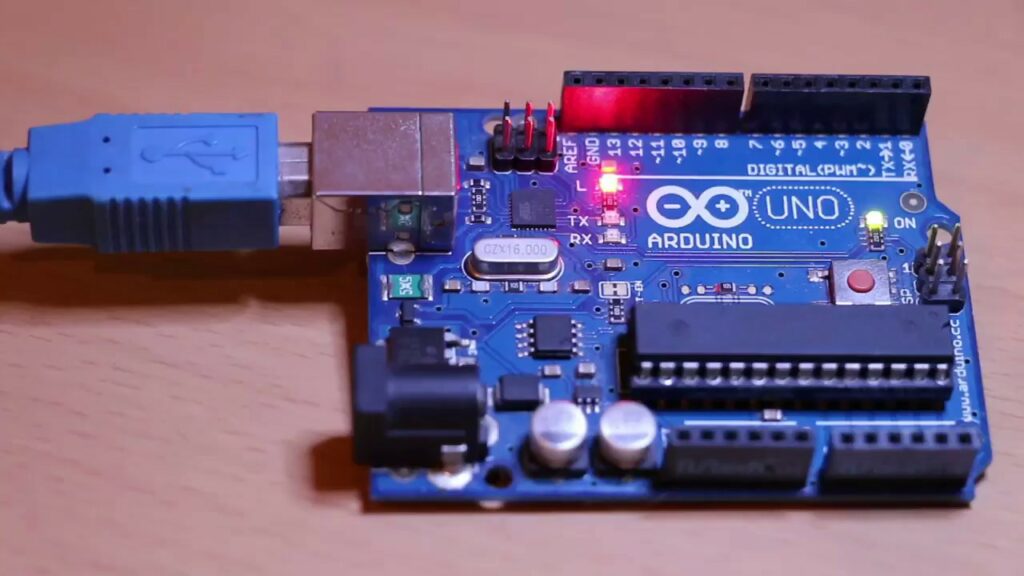Mastering Arduino Programming: A Comprehensive Guide

Introduction: Arduino is a versatile open-source electronics platform widely used by hobbyists, students, and professionals for creating interactive projects and prototypes. With its easy-to-use hardware and software components, Arduino allows users to quickly develop and deploy embedded systems for a variety of applications, from robotics and automation to IoT (Internet of Things) and wearable technology. In this extensive guide, we’ll explore how to program Arduino boards, covering everything from setting up the development environment to writing and uploading code for various projects and applications.
Section 1: Getting Started with Arduino 1.1 Introduction to Arduino Boards and Components: Get acquainted with the different types of Arduino boards available, including the Arduino Uno, Mega, Nano, and more, each with its own set of features and capabilities. Learn about the basic components of an Arduino board, such as microcontrollers, input/output pins, power supply, and USB interface, and understand their functions in the context of embedded systems development.
1.2 Setting up the Arduino Development Environment: Before you can start programming Arduino boards, you’ll need to set up the Arduino Integrated Development Environment (IDE) on your computer. The Arduino IDE is available for Windows, macOS, and Linux platforms and can be downloaded from the Arduino website. Install the IDE and configure it for your specific Arduino board model, including selecting the appropriate board type and serial port in the IDE settings.
Section 2: Writing and Uploading Arduino Code 2.1 Understanding the Arduino Programming Language: Familiarize yourself with the Arduino programming language, which is based on C/C++ syntax and tailored for embedded systems development. Learn about the basic structure of Arduino sketches (programs), including setup and loop functions, variable declarations, control structures, and function definitions. Explore Arduino’s extensive library of built-in functions and data types for interacting with hardware peripherals and sensors.
2.2 Writing Your First Arduino Sketch: Start programming Arduino boards by writing a simple “Hello World” sketch to blink an LED connected to one of the digital pins. Learn how to declare pin modes, write digital and analog output, and use delay functions to control the timing of the LED blink. Upload the sketch to the Arduino board using the Arduino IDE and verify that the LED blinks according to the specified pattern.
Section 3: Interfacing with Sensors and Actuators 3.1 Reading Sensor Data: Explore how to interface Arduino boards with various sensors, such as temperature sensors, light sensors, motion sensors, and more, to collect real-world data for your projects. Learn how to connect sensors to Arduino boards using analog or digital pins and use Arduino’s analogRead and digitalRead functions to read sensor values. Process and interpret sensor data in Arduino sketches to trigger actions or display information on output devices.
3.2 Controlling Actuators and Output Devices: Learn how to control actuators and output devices, such as motors, servos, LEDs, and displays, using Arduino boards. Interface actuators with Arduino boards using digital or analog output pins and use Arduino’s digitalWrite and analogWrite functions to control their operation. Explore applications such as motor control, servo positioning, LED animation, and display output by writing Arduino sketches that interact with external hardware components.
Section 4: Communication and Networking 4.1 Serial Communication: Understand how to establish serial communication between Arduino boards and other devices, such as computers, smartphones, and other microcontrollers. Learn how to use Arduino’s Serial library to send and receive data over the serial port, enabling bidirectional communication for debugging, monitoring, and controlling Arduino projects from external sources.
4.2 Wireless Communication with RF Modules and Bluetooth: Explore wireless communication techniques with Arduino boards using RF (Radio Frequency) modules, Bluetooth modules, and Wi-Fi shields. Learn how to interface RF transmitters and receivers with Arduino boards to create wireless communication links for remote control and data transmission. Experiment with Bluetooth modules to enable wireless connectivity between Arduino boards and mobile devices for IoT applications and wearable technology projects.
Section 5: Advanced Arduino Techniques and Projects 5.1 Using Libraries and External Modules: Expand the capabilities of Arduino projects by leveraging external libraries and modules available in the Arduino ecosystem. Learn how to install and use third-party libraries for interfacing with specific hardware components, such as displays, sensors, and communication modules. Explore examples of popular Arduino libraries, such as Adafruit GFX, DHT, and NeoPixel, and integrate them into your projects to enhance functionality and efficiency.
5.2 Building Advanced Arduino Projects: Apply your Arduino programming skills to build advanced projects and prototypes for various applications. Explore project ideas such as home automation systems, weather stations, robotic vehicles, smart gadgets, and more, using Arduino boards as the central control platform. Combine multiple sensors, actuators, and communication modules in your projects to create interactive and interconnected systems that respond to external stimuli and user inputs.
Conclusion: Arduino programming offers a gateway into the world of embedded systems development, enabling enthusiasts and professionals alike to bring their creative ideas to life with ease and flexibility. By mastering the fundamentals of Arduino programming and exploring advanced techniques and projects, you can unlock the full potential of Arduino boards for a wide range of applications, from simple DIY projects to complex IoT solutions. Whether you’re a beginner getting started with your first Arduino project or an experienced maker pushing the boundaries of embedded systems design, Arduino provides the tools and resources you need to innovate, create, and inspire in the exciting realm of electronics and technology.




